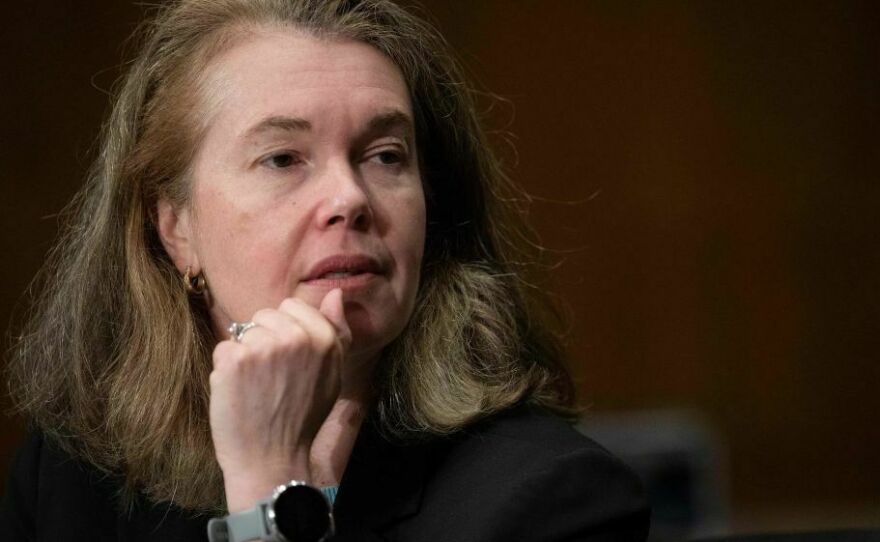The bird flu that's now spreading among cows doesn't yet appear to pose an imminent threat to most people. Scientists say the virus would need to mutate significantly to be able to transmit easily from human to human.
But federal health officials say they've started trying to develop a vaccine to protect people just in case a pandemic erupts.
"We've got some preparedness pieces in place that will give us a head start should we need a large-scale vaccination campaign in a pandemic situation," Dawn O'Connell, the assistant secretary for preparedness and response at the Health and Human Services Department, told NPR in an interview this week.
That includes two vaccines made from older, but similar strains of the virus that early testing indicates could protect people, O'Connell said. The government also has stocks of adjuvant, a substance that is used to increase a vaccine's effectiveness, O'Connell said.
"We actually have manufactured small lots of both of the candidates. So we have some to the tune of hundreds of thousands in prefilled syringes and in vials that could be deployed fairly quickly," she said.
The government also has the raw material to make 10 million additional doses within weeks, plus another 125 million doses within about four months, she said.
"You could imagine getting that first 100 million doses is going to be really important and is going to give us a good head start and then we would lean into the manufacturing from there to continue to ramp up," she said.

No one knows how much of a risk the bird flu poses of causing a human epidemic, and so a vaccine may not become necessary.
Some outside experts agree the U.S. is well prepared to produce a vaccine. But some infectious disease specialists are skeptical about the nation's preparedness for this potential threat.
"The first thing we have to do is eliminate the happy talk," said Michael Osterholm, who runs the Center for Infectious Disease Research and Policy and the University of Minnesota.
"I think estimates of stockpiles that currently exist and the potential to use them should this emerge into a human pathogen where it's transmitted by humans to humans, have unfortunately been overstated," Osterholm said.
For example, not enough testing has been done yet to know how well the two candidate vaccines would really work, especially since the virus would have likely changed if it becomes a real threat to people, Osterholm said.
"I don't have a lot of faith that those vaccines will offer a great deal of protection," he said.
And even if an effective vaccine was available, most flu vaccines are still produced with old-fashioned technology that relies on growing virus in eggs — this can take months to make enough and can be unpredictable. The country would need more than 600 million doses because everyone would need two shots.
"Given those limitations, I think it's really critical for the federal government to take a much more aggressive posture," said Luciana Borio, a senior fellow for global health at the Council on Foreign Relations. "We can't afford to falsely reassure ourselves. We need to be more humble."
Borio and others argued the federal government's overly optimistic assessments are sending the wrong message to the public and to Congress, which would have to provide funding to really ramp up vaccine production.
"I do not think we are ready with our vaccine enterprise to be able to respond fast enough," said Rick Bright, who until 2020 worked at the Biomedical Advanced Research and Development Authority, or BARDA, a federal agency involved in pandemic research.
"There's a lot of gaps in our preparedness response. We don't have prioritization strategy on who to vaccinate first. We don't have distribution plan in place if we need to distribute vaccines," he said. "So there's a lot of work that needs to be done."
Bright thinks the government should develop a vaccine based on the strain of the virus that recently ratcheted up alarm when it infected a dairy worker in Texas.
"When we're starting with candidate vaccines that are from viruses in 2020 we're already perhaps four years behind the evolution of the virus," Bright said. "I would update those candidate vaccine viruses while we have the time."
The government should also start funding mRNA vaccine development directly, Bright said.
Bright, Osterholm, Borio and others worry that the response illustrates how little the country has learned from previous pandemics like COVID.
"It does feel like Ground Hog Day," said Jennifer Nuzzo, who heads Brown University's Pandemic Center. "We still seem to be stuck in reactive mode. We shouldn't be waiting for evidence that the virus is devastating us. We should be trying to act now to prevent the virus from devastating us."
In the interview with NPR, O'Connell of HHS acknowledged that the country could face problems developing and distributing a vaccine. But she stressed that beyond additional testing of one of the vaccine candidates, drug companies are also developing mRNA vaccines. The federal government is in talks to help with that too, she said.
"While we have a head start and we're not starting flat-footed as we did with COVID, that doesn't mean this is going to be simple and this is going to be easy," she said. "But I am pleased we have some tools to leverage."
In the short term, Nuzzo thinks the country should start vaccinating dairy workers as soon as possible.
"We need to protect farm workers and those exposed to raw milk," said Nuzzo.
That would protect workers' health and possibly help reduce the chances the virus would evolve to spread more easily among people, Nuzzo said.
During a briefing for reporters Wednesday, Vivien Dugan, director of the influenza division at the Centers for Disease Control and Prevention, said dairy worker vaccination might begin if any worrisome new changes are detected about the virus, such as changes in its genetic code.
Nuzzo and others said they are alarmed by the dearth of information being released by the federal government about the status of vaccine development and other important issues related to the virus.
"I wish there would be more transparency about what's going on because ultimately if we're ever going to ask people to use vaccines they need to understand the process by which they were generated so they can have confidence in that process. And we cannot do that at the last minute," Nuzzo said. "We saw the challenges of doing that in COVID and I do not want to see us do that again."
During Wednesday's briefing, David Boucher, who directs infectious disease preparedness for the federal Administration for Strategic Preparedness and Response, said two vaccine companies are already doing further testing of one of the two candidate vaccines.
Copyright 2024 NPR. To see more, visit https://www.npr.org. 9(MDAzMjM2NDYzMDEyMzc1Njk5NjAxNzY3OQ001))







